Designing with Asymmetry
Asymmetry in interior design is rapidly gaining popularity, transforming spaces with its unique and visually captivating appeal. Unlike traditional symmetrical designs, which often evoke a sense of order and predictability, asymmetrical wall décor breaks the mold by introducing a lively and dynamic aesthetic that catches the eye and stimulates the imagination. This innovative approach allows homeowners and designers to create a personalized space that reflects their style and creativity. In this blog post, we’ll explore the art of asymmetrical wall décor, delving into its benefits, various types, and how you can effortlessly incorporate this trend into your home to enhance the overall ambiance and character of your living spaces.
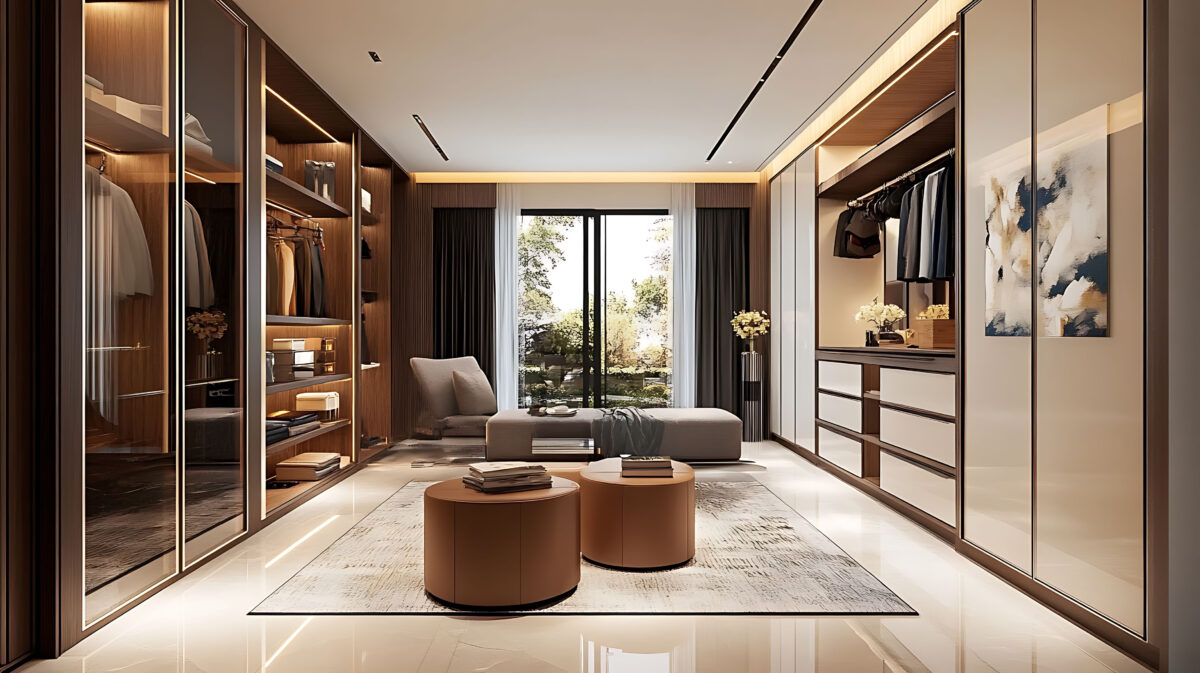
Understanding Asymmetry in Design
Asymmetry in design refers to the deliberate placement of elements that are not identical on either side of a central axis. Unlike symmetrical design, where balance is achieved through mirrored or evenly spaced objects, asymmetry creates visual interest through contrast, variation, and unexpected arrangements. This approach to design allows for a more dynamic and engaging aesthetic, as it breaks the monotony of uniformity and introduces a sense of spontaneity and creativity. In wall decor, asymmetry can be a powerful tool for making a space feel livelier and more personalized, offering a fresh perspective that challenges traditional design norms.
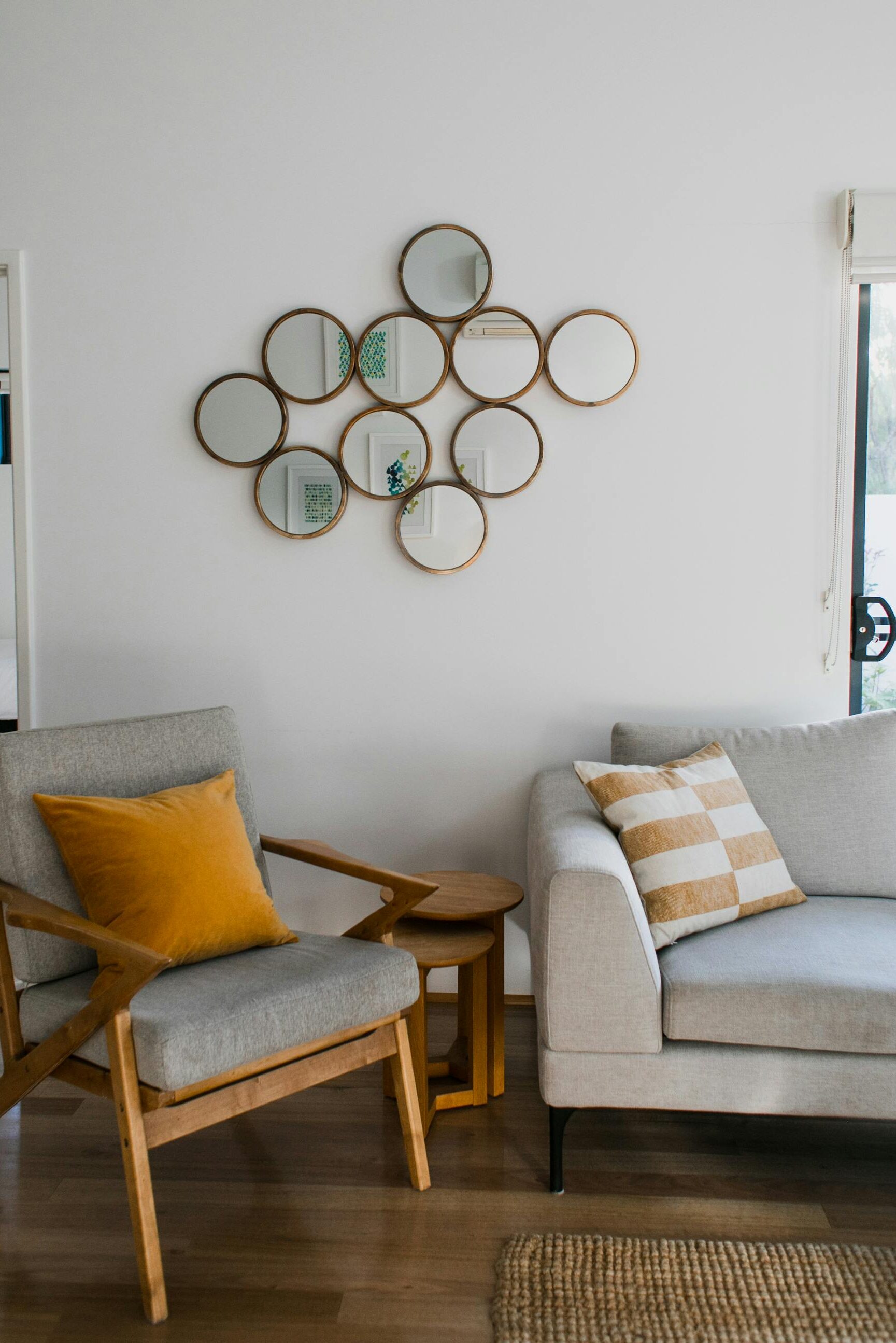
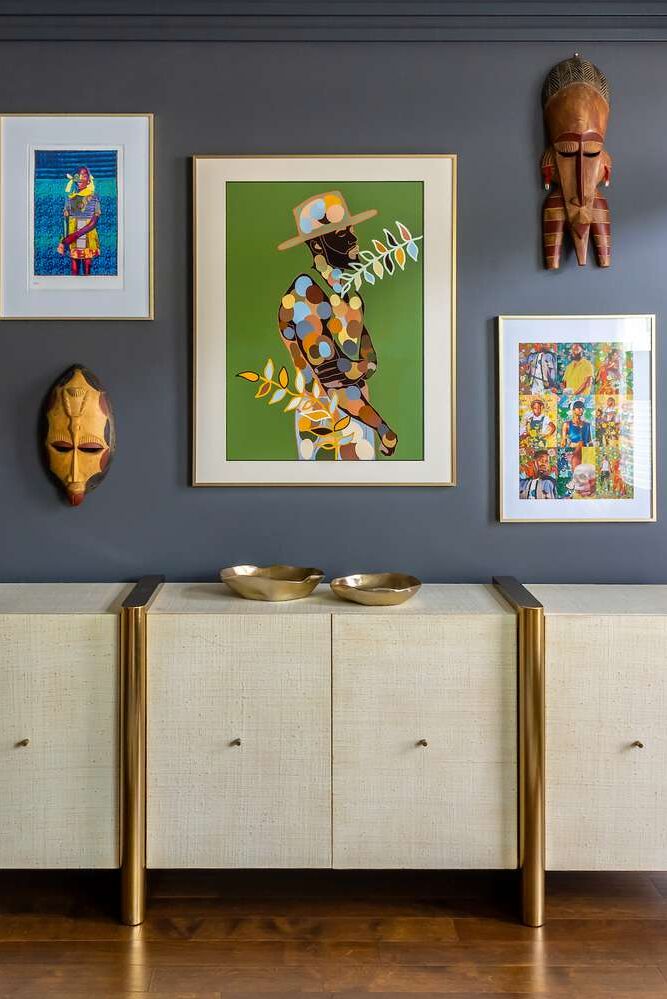
Types of Asymmetrical Wall Décor/ Desing
Accent Wall Designs
An accent wall offers a unique canvas for asymmetrical design, allowing for creativity and self-expression that extends beyond traditional symmetry. Rather than opting for a uniform paint color or pattern, asymmetrical accent walls play with color blocks, geometric shapes, or even eclectic wallpaper sections to create a visually striking centerpiece in a room. The key to a successful asymmetrical accent wall is to balance bold patterns or colors with negative space, ensuring that the wall does not overpower the rest of the room but rather complements and enhances it. By using varying heights and shapes or incorporating different textures and materials, an asymmetrical accent wall can transform a bland space into a dynamic and engaging environment that reflects your personal style.
Elevate your space with an asymmetrical accent wall crafted from Finished Elegance, perfect for adding a unique and modern touch to any room. This premier moulding line installs effortlessly and requires no painting, making it an ideal choice for building a one-of-a-kind design that brings subtle sophistication to your interior. If you are looking to paint the molding and/or wall in your accent wall, primed fingerjoint pine moulding is another great, durable option. Check out our blog, DIY Accent Wall: Functional Geometric, for a step-by-step guide and inspiration on designing your own asymmetrical accent wall at home using Woodgrain’s 1×3 boards. Want to find the perfect board for your project? Discover how Woodgrain can help you create the perfect—or perfectly imperfect—accent wall here.
Off-Center Artwork
Hanging artwork off-center is another popular method of incorporating asymmetry into wall décor. This technique involves placing a single piece of art or a collection of items in a way that deliberately disrupts the traditional centered or evenly spaced arrangement. This off-center placement can create a sense of movement and draws the viewer’s attention to specific areas of the room, making it an excellent way to highlight architectural features or other design elements. For example, hanging a large piece of artwork slightly to the side of a fireplace or window can balance out the visual weight of the furniture in the room and add a touch of modernity. When experimenting with off-center artwork, consider the scale and proportion of the pieces and the surrounding décor to achieve a harmonious yet eye-catching result.
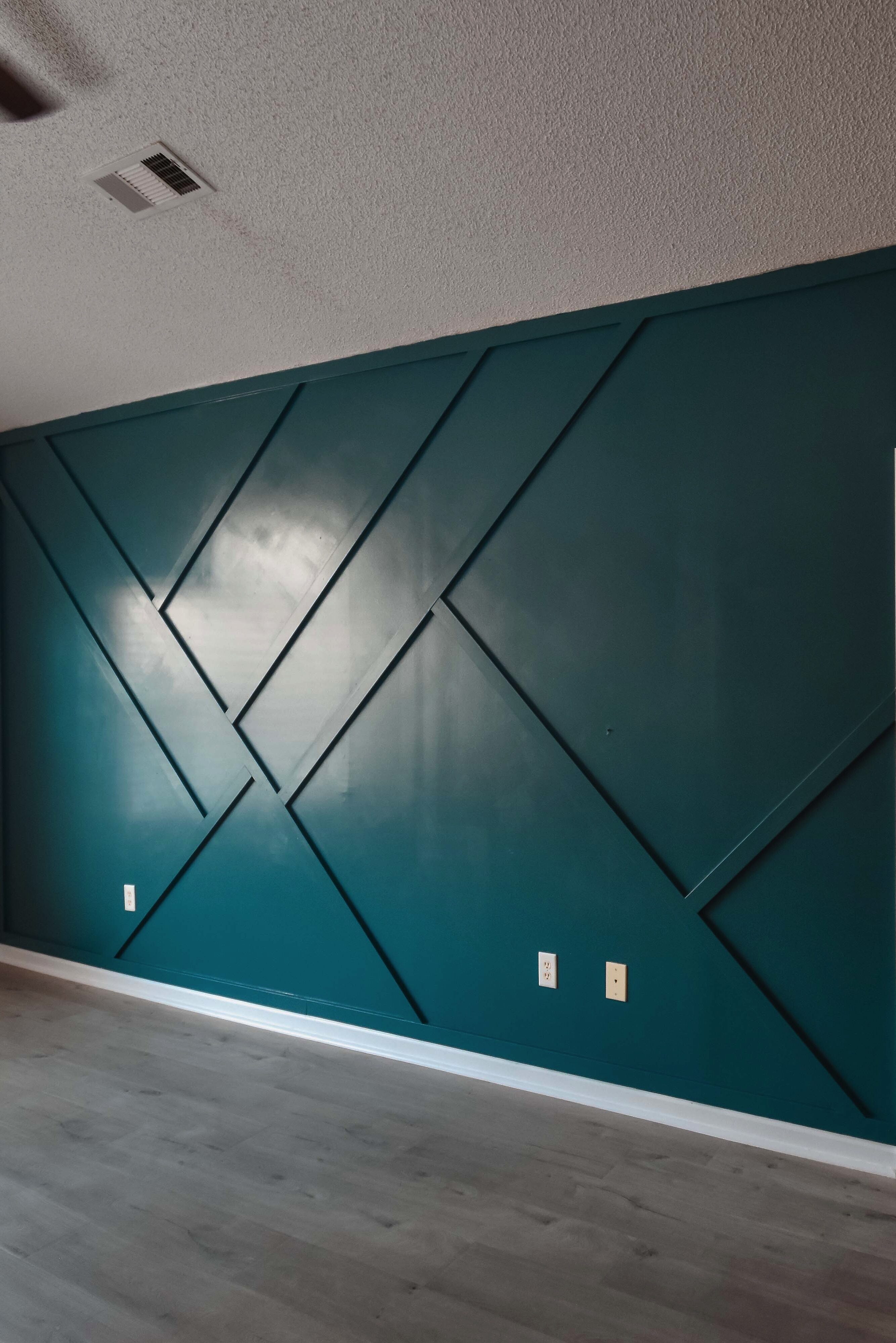
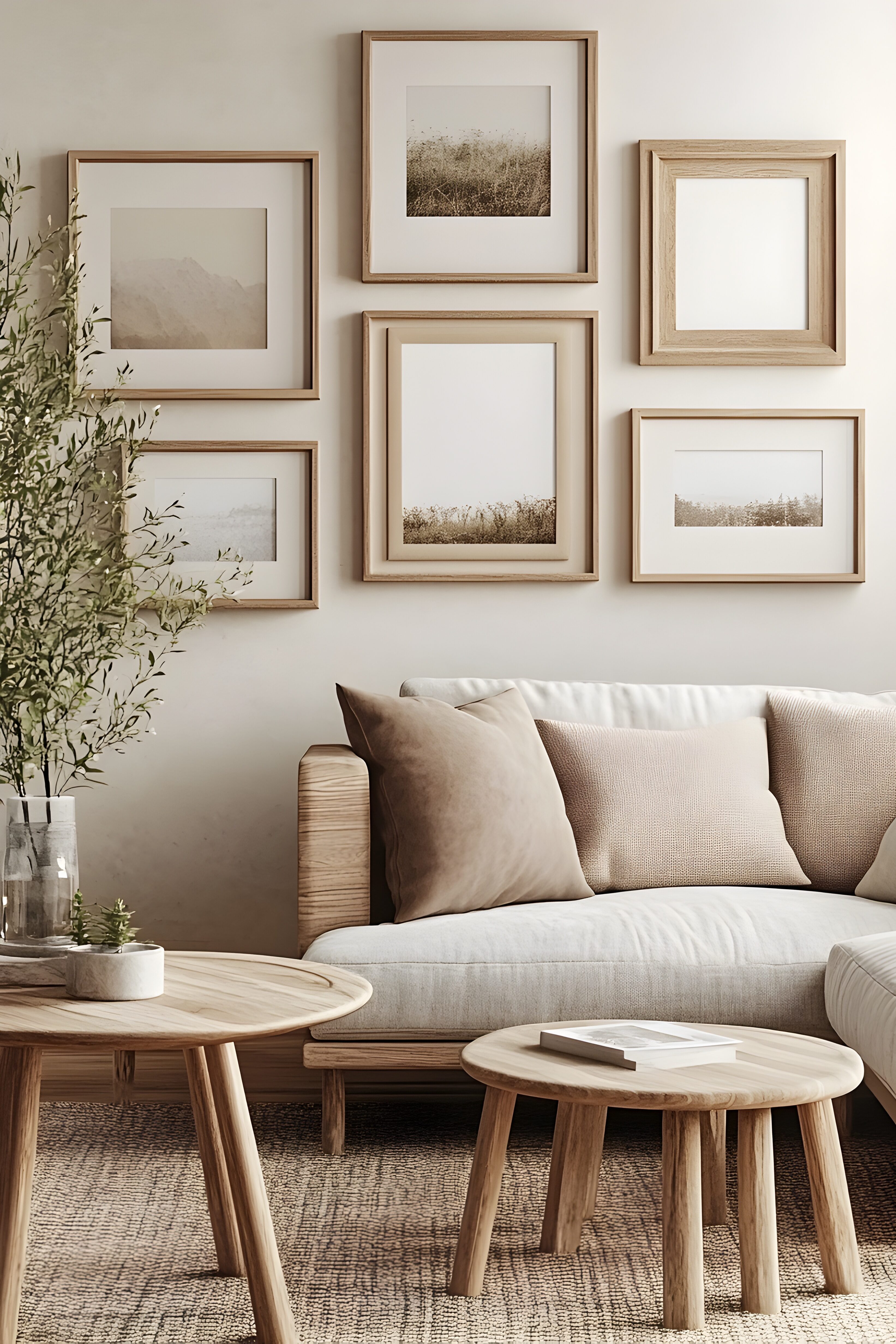
Balancing Asymmetrical Elements
Creating harmony in an asymmetrical design requires careful consideration of color, texture, and placement to ensure that each element complements rather than competes with the others. One of the most effective strategies is using a cohesive color palette, which can help unify disparate elements and create a sense of flow. For instance, incorporating a dominant color theme across various asymmetrical features, such as a bold wall color that echoes the hues of off-center artwork or textured décor, can create visual continuity. Additionally, mixing textures, such as combining smooth surfaces with rough or natural materials, adds depth and interest, enhancing the overall design. It is also crucial to consider the room’s focal points and ensure that the asymmetrical décor accentuates these areas rather than distracting from them. By thoughtfully arranging furniture, artwork, and décor, you can draw the eye to specific parts of the room, highlighting architectural features or creating a sense of movement. The key is to strike a balance between the various elements, allowing them to coexist in a way that feels intentional and harmonious, creating a space that is both visually engaging and comfortable.
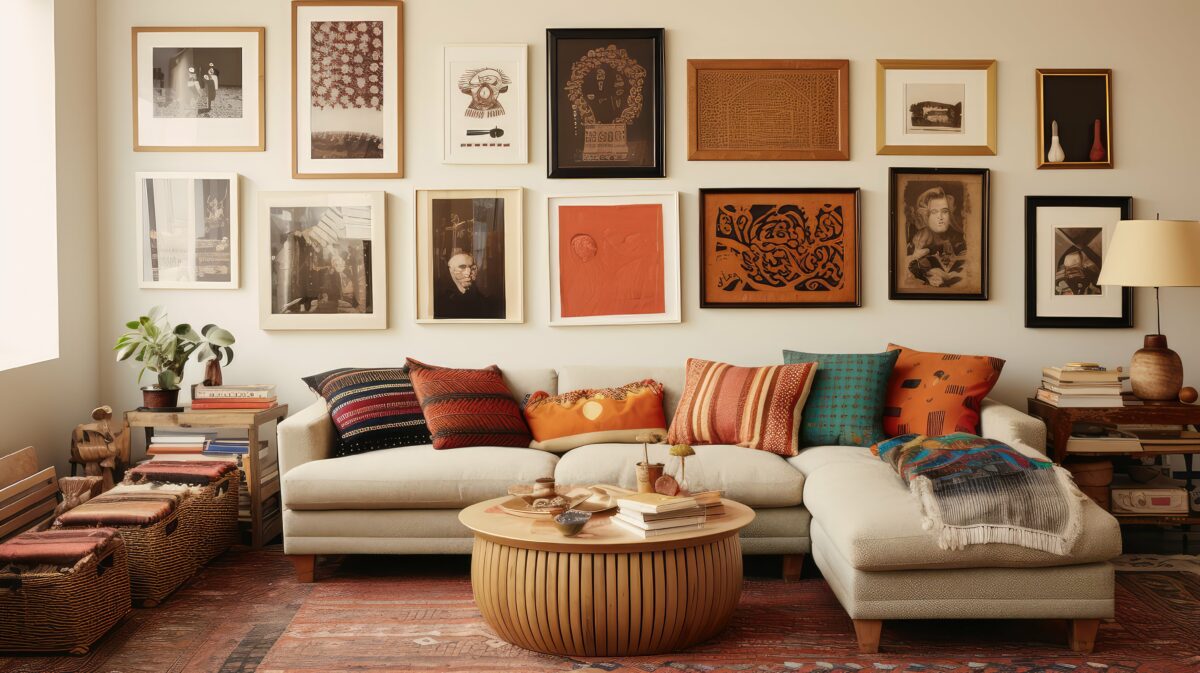
Incorporating asymmetrical wall décor into your home is a creative and engaging way to redefine your space, adding a unique blend of balance and dynamism that breaks away from traditional design norms. As we’ve explored, the beauty of asymmetry lies in its ability to introduce visual interest, depth, and character to any room, whether through accent wall designs, off-center artwork, or unique shelving configurations. By thoughtfully selecting and arranging these elements, you can create a space that reflects your personality and style while maintaining harmony and cohesion. Asymmetrical design not only offers a fresh perspective on interior decoration but also allows for flexibility and innovation, encouraging you to experiment and express yourself. So, why not take a bold step and embrace the art of asymmetry in your own home?
Check out our Pinterest Board for more inspirational designs and make sure to follow us on Instagram and Facebook @WeAreWoodgrain